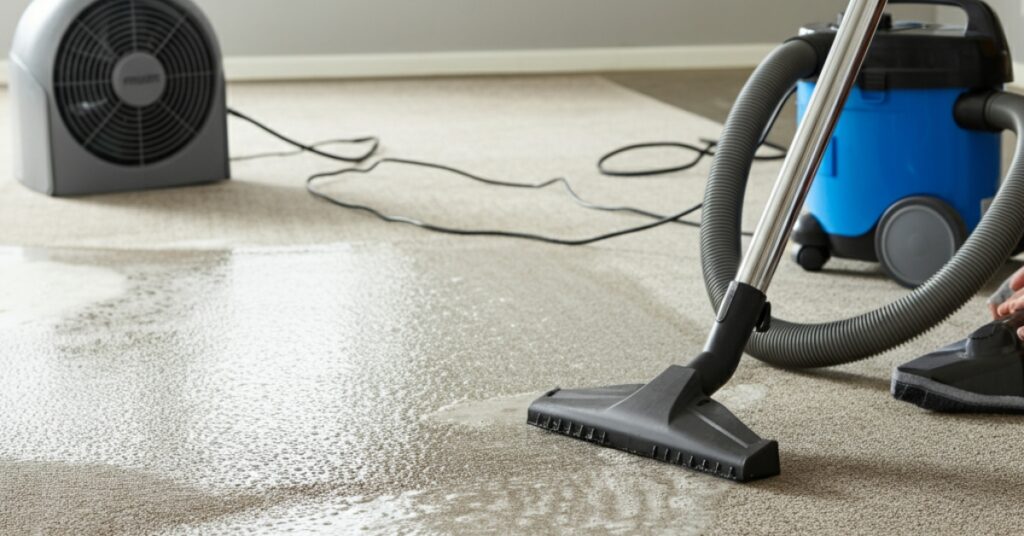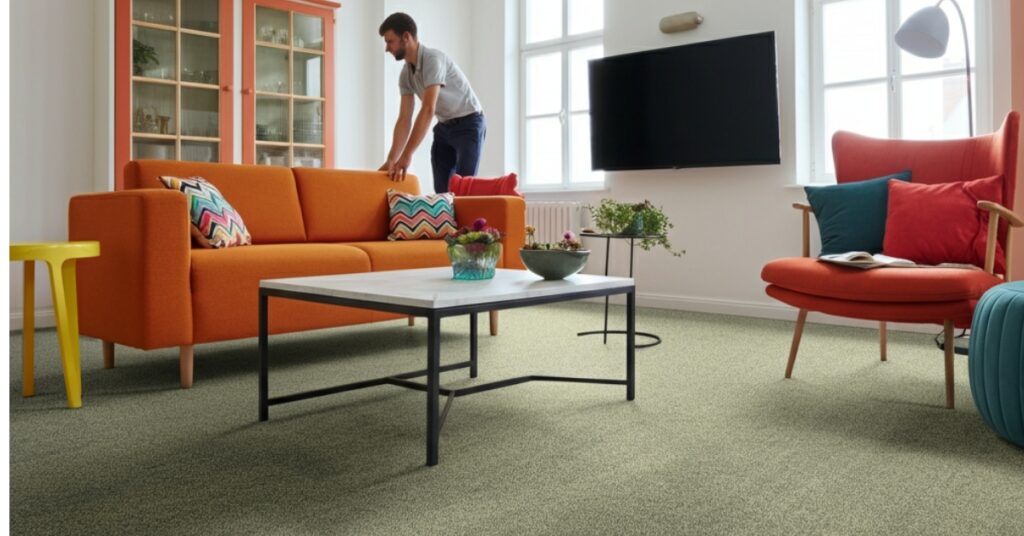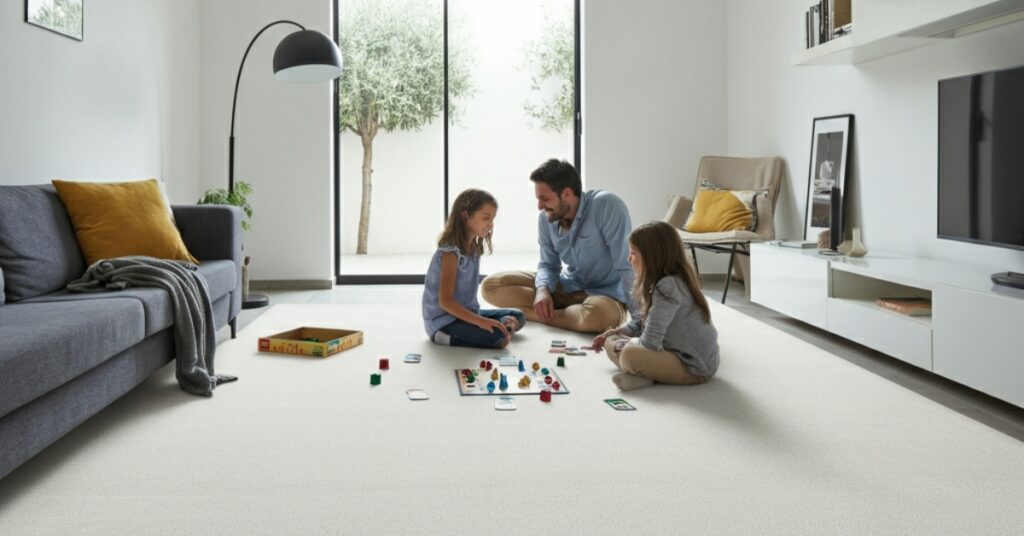As an Amazon Associate, I earn from qualifying purchases.
Knowing how thick a carpet should be is crucial when selecting new flooring for your home. The right thickness, often called pile height, impacts not only how a carpet feels underfoot but also its durability and overall appearance. Choosing the correct carpet thickness ensures you get the comfort, performance, and style you want for any room. This decision is as important as picking the color or material.
Understanding the details of carpet thickness helps you make an informed choice. Different areas of your home have different needs; for instance, a high-traffic hallway requires a more durable, less thick carpet compared to a cozy, less-used bedroom. By learning about the factors that determine ideal carpet thickness, such as pile height and density, you can select a carpet that will look great and last for years.
Understanding Carpet Thickness
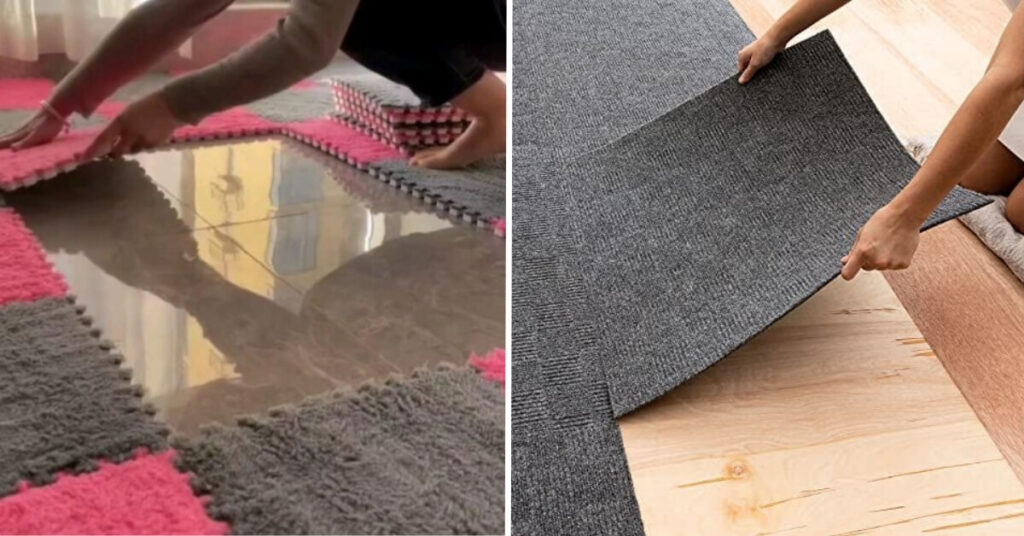
When we discuss how thick a carpet is, we are referring to several measurements that together define its structure and feel. These include pile height, carpet density, and face weight. Each of these elements plays a significant role in the carpet’s performance, comfort, and longevity. Getting familiar with these terms is the first step toward choosing the perfect carpet for your space.
A carpet’s thickness is not just about a single measurement; it’s a combination of factors. For example, a carpet can have a tall pile height but low density, which might feel soft initially but will not hold up well over time. Conversely, a carpet with a shorter, denser pile will be more resilient and better suited for busy areas. Therefore, understanding the interplay between these characteristics is essential.
The Role of Pile Height in Carpet Thickness
Pile height is the most direct measurement of how thick a carpet is. It measures the length of the carpet fibers from the backing to the tip. This measurement does not include the thickness of the carpet backing itself. Pile height is typically categorized into low, medium, and high profiles, each offering distinct advantages and best suited for different applications.
Low-pile carpets, for example, have fibers that are less than 1/4 inch high. This short pile makes them durable and easy to clean, which is why they are often used in commercial settings and high-traffic residential areas like hallways and entryways. Medium-pile carpets offer a balance of comfort and durability, while high-pile carpets provide a luxurious, plush feel perfect for bedrooms.
Understanding Carpet Density
Carpet density is another critical factor that contributes to how thick a carpet feels and performs. Density refers to how closely the carpet fibers are stitched together into the backing. A denser carpet will have more fibers per square inch, making it more resilient and durable. You can test a carpet’s density by pressing your fingers into the pile; if you can easily feel the backing, the carpet has low density.
High-density carpets are excellent at resisting crushing and matting, which makes them ideal for high-traffic zones. Although a dense carpet might not always have a high pile, its closely packed fibers provide substantial support and a solid feel. Consequently, density is arguably more important than pile height when it comes to a carpet’s long-term durability and appearance retention.
The Impact of Face Weight on a Carpet
Face weight measures the weight of the carpet pile per square yard, expressed in ounces. It only accounts for the weight of the fibers, not the backing material. Generally, a higher face weight indicates a greater amount of yarn was used to make the carpet, which often translates to a denser and more durable product. This makes face weight a useful indicator of quality.
However, face weight alone does not tell the whole story. It must be considered alongside pile height and density. For example, a high-pile carpet might have a high face weight simply because the fibers are long, not necessarily because it is dense. Therefore, a good quality carpet will have a healthy balance of face weight and density for its given pile height.
Types of Carpet Pile Thickness
The thickness of a carpet’s pile directly influences its texture, feel, and suitability for different areas of your home. From short and tight to long and shaggy, each pile type offers a unique combination of style and function. Understanding these differences will help you select a carpet that meets both your aesthetic preferences and practical needs.
Choosing the right pile type is about matching the carpet’s characteristics to the room’s function. A plush, high-pile carpet might be perfect for a cozy bedroom where comfort is key, but it would be impractical in a busy living room where durability and ease of cleaning are more important. Let’s explore the common types of carpet pile thickness.
Low-Pile Carpet
Low-pile carpets feature short fibers, typically less than 1/4 inch tall. This construction creates a flat, dense surface that is exceptionally durable and easy to maintain. Because there is less material for dirt and allergens to hide in, cleaning is straightforward, often requiring just a quick vacuum. These practical benefits make low-pile carpets a popular choice.
Due to their resilience, low-pile carpets are perfectly suited for high-traffic areas such as hallways, stairs, and family rooms. They resist matting and crushing from foot traffic, ensuring they maintain their appearance for longer. Additionally, their smooth surface provides a stable foundation for furniture and makes it easier for people with mobility aids to move around.
Medium-Pile Carpet
Medium-pile carpets strike a comfortable balance between the durability of low-pile options and the softness of high-pile ones. With a pile height ranging from 1/4 to 1/2 inch, they offer a pleasant texture underfoot without being difficult to clean. This versatility makes them the most popular choice for residential use, fitting well in almost any room.
These carpets provide good insulation and a comfortable surface for sitting or playing, making them ideal for living rooms and children’s bedrooms. While they require a bit more maintenance than low-pile carpets, their combination of comfort, durability, and style makes them a practical and attractive option for many homeowners seeking a middle ground.
High-Pile Carpet
High-pile carpets are defined by their long, loose fibers, which are typically between 1/2 and 3/4 inch in length. This creates a luxurious, plush, and shaggy appearance that feels incredibly soft and warm underfoot. These carpets, including styles like shag and frieze, are all about maximizing comfort and creating a cozy, inviting atmosphere.
Because of their long fibers, high-pile carpets are best suited for low-traffic areas like bedrooms, dens, or home offices where comfort is the priority. They are more challenging to clean, as dirt can get trapped deep within the fibers, and they are more susceptible to matting. However, for those looking to add a touch of luxury and warmth, a high-pile carpet is an excellent choice.
Choosing the Right Carpet Thickness
Selecting the right carpet thickness is a decision that balances aesthetics, comfort, and practicality. The ideal choice depends heavily on the specific room, your lifestyle, and your budget. A well-chosen carpet not only enhances the look of a room but also stands up to the demands of daily life, providing lasting value and satisfaction.
Before making a final decision, consider factors like foot traffic, the presence of children or pets, and your cleaning routine. For instance, a household with active kids might benefit from a durable, medium-pile carpet that can handle spills and play, while a quiet, adult-only home might indulge in a more luxurious high-pile option.
Best Carpet Thickness for Bedrooms
In bedrooms, comfort is often the top priority. This is the room where you begin and end your day, and having a soft, warm surface underfoot can make a significant difference. For this reason, high-pile carpets are a fantastic choice for bedrooms. Their plush, luxurious feel adds a sense of coziness and tranquility to the space.
A medium-pile carpet is also a great option, offering a good compromise between softness and ease of maintenance. Since bedrooms typically experience lower foot traffic compared to other areas of the house, you can prioritize comfort without worrying too much about wear and tear. A thicker carpet also provides better sound insulation, contributing to a quieter, more peaceful environment.
Best Carpet Thickness for Living Rooms

Living rooms are often the heart of the home, which means they see a lot of activity. The best carpet for this space needs to be durable enough to handle daily foot traffic while still being comfortable and stylish. Medium-pile carpets are frequently the top choice for living rooms because they offer an ideal blend of resilience and softness.
A medium-pile carpet provides a comfortable surface for family gatherings and relaxation, yet it is sturdy enough to resist matting. If you prefer a more luxurious feel and your living room has lighter traffic, a dense, high-pile carpet could also work. However, for most families, a medium-pile carpet offers the most practical and versatile solution.
Best Carpet Thickness for Stairs and Hallways
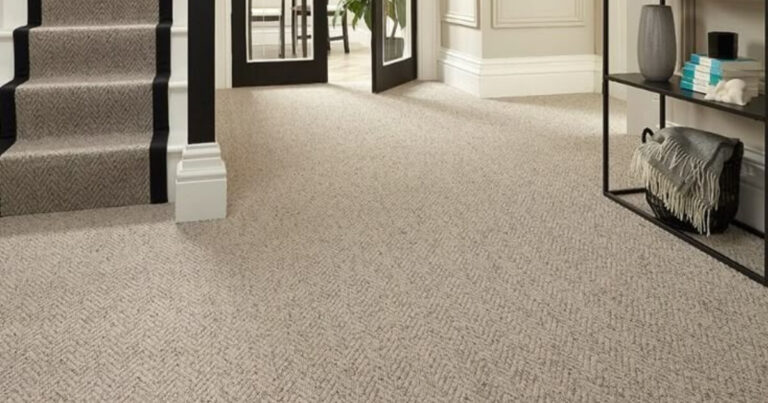
Stairs and hallways are the highest-traffic areas in any home, so durability is the most important factor when choosing a carpet for these spaces. A low-pile carpet is the best option because its short, dense fibers are highly resistant to crushing and wear. This ensures the carpet will maintain its appearance even with constant use.
Safety is another key consideration for stairs. A low-pile carpet provides a more stable footing, reducing the risk of slips and falls. Thicker, high-pile carpets can be a hazard on stairs because they can cause you to lose your footing. Therefore, a durable and secure low-pile carpet is the safest and most practical choice for stairs and hallways. Interested in similar topics? This blog might help: How Thick Should Carpet and Pad Be?
FAQs About Carpet Thickness
1. Is a thicker carpet always better?
No, a thicker carpet is not always better. The best carpet thickness depends on the specific needs of the room. While thicker, high-pile carpets are very comfortable, they are not suitable for high-traffic areas because they can mat down and are harder to clean. A shorter, denser carpet is often more durable and practical for busy spaces.
2. How does carpet padding affect the feel of the carpet?
Carpet padding plays a huge role in how a carpet feels underfoot. A quality pad provides extra cushioning, improves sound insulation, and extends the life of your carpet by absorbing impact. Choosing the right padding thickness and density for your specific carpet is essential for optimal comfort and performance.
3. What is the standard thickness for residential carpet?
The most common choice for residential carpet is a medium pile with a height between 1/4 and 1/2 inch. This thickness offers a good balance of comfort, durability, and ease of maintenance, making it suitable for most rooms in a home, including living rooms and bedrooms.
4. Can you have a thick carpet with pets?
Yes, you can have a thick carpet with pets, but it’s important to choose the right type. A dense, medium-pile carpet made from a stain-resistant material like nylon or polyester is a good option. Avoid high-pile or loop-pile carpets, as pet claws can get snagged and dirt can get trapped deep in the fibers.
5. How do I measure carpet thickness myself?
To measure carpet thickness, you can use a ruler or a tape measure. Straighten a paperclip and push it through the carpet until it hits the backing. Mark the paperclip at the top of the fibers, then pull it out and measure the distance from the mark to the end of the paperclip. This gives you the pile height.
Final Thoughts
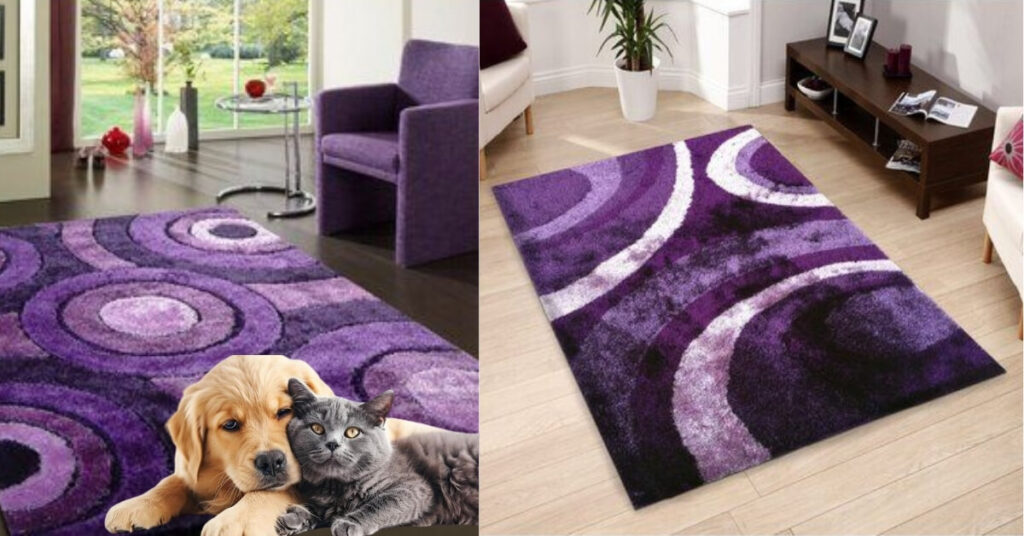
Choosing how thick a carpet should be is a vital part of your home flooring decision. By understanding the differences between pile height, density, and face weight, you can select a carpet that not only looks and feels great but also performs well for years to come. Remember to match the carpet’s thickness to the room’s function, prioritizing durability in high-traffic areas and comfort in low-traffic spaces. With the right knowledge, you can confidently find the perfect carpet to enhance your home’s comfort and style.
As an Amazon Associate, I earn from qualifying purchases.


